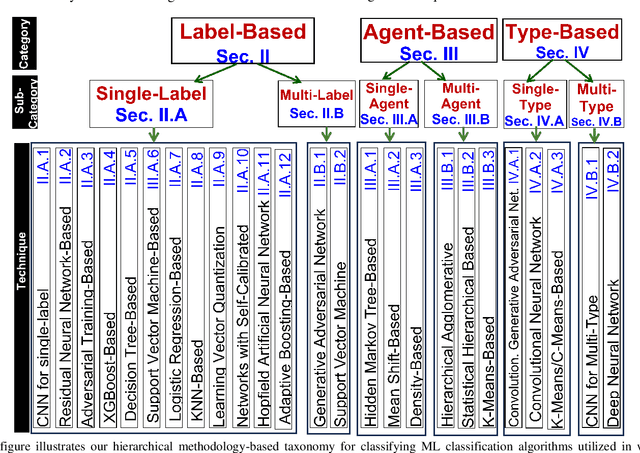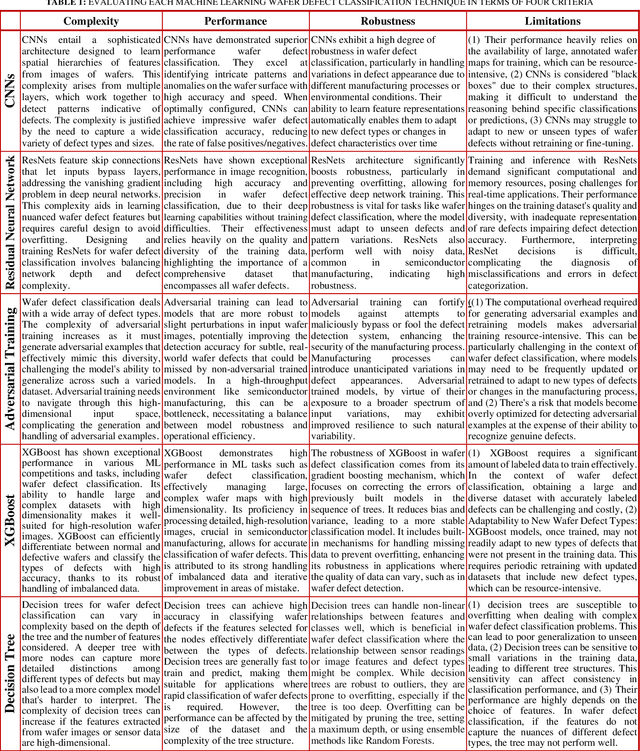Machine Learning Techniques for Identifying the Defective Patterns in Semiconductor Wafer Maps: A Survey, Empirical, and Experimental Evaluations
Paper and Code
Oct 16, 2023



This survey paper offers a comprehensive review of methodologies utilizing machine learning (ML) techniques for identifying wafer defects in semiconductor manufacturing. Despite the growing body of research demonstrating the effectiveness of ML in wafer defect identification, there is a noticeable absence of comprehensive reviews on this subject. This survey attempts to fill this void by amalgamating available literature and providing an in-depth analysis of the advantages, limitations, and potential applications of various ML algorithms in the realm of wafer defect detection. An innovative taxonomy of methodologies that we present provides a detailed classification of algorithms into more refined categories and techniques. This taxonomy follows a four-tier structure, starting from broad methodology categories and ending with specific sub-techniques. It aids researchers in comprehending the complex relationships between different algorithms and their techniques. We employ a rigorous empirical and experimental evaluation to rank these varying techniques. For the empirical evaluation, we assess techniques based on a set of four criteria. The experimental evaluation ranks the algorithms employing the same sub-techniques, techniques, sub-categories, and categories. This integration of a multi-layered taxonomy, empirical evaluations, and comparative experiments provides a detailed and holistic understanding of ML techniques and algorithms for identifying wafer defects. This approach guides researchers towards making more informed decisions in their work. Additionally, the paper illuminates the future prospects of ML techniques for wafer defect identification, underscoring potential advancements and opportunities for further research in this field
 Add to Chrome
Add to Chrome Add to Firefox
Add to Firefox Add to Edge
Add to Edge